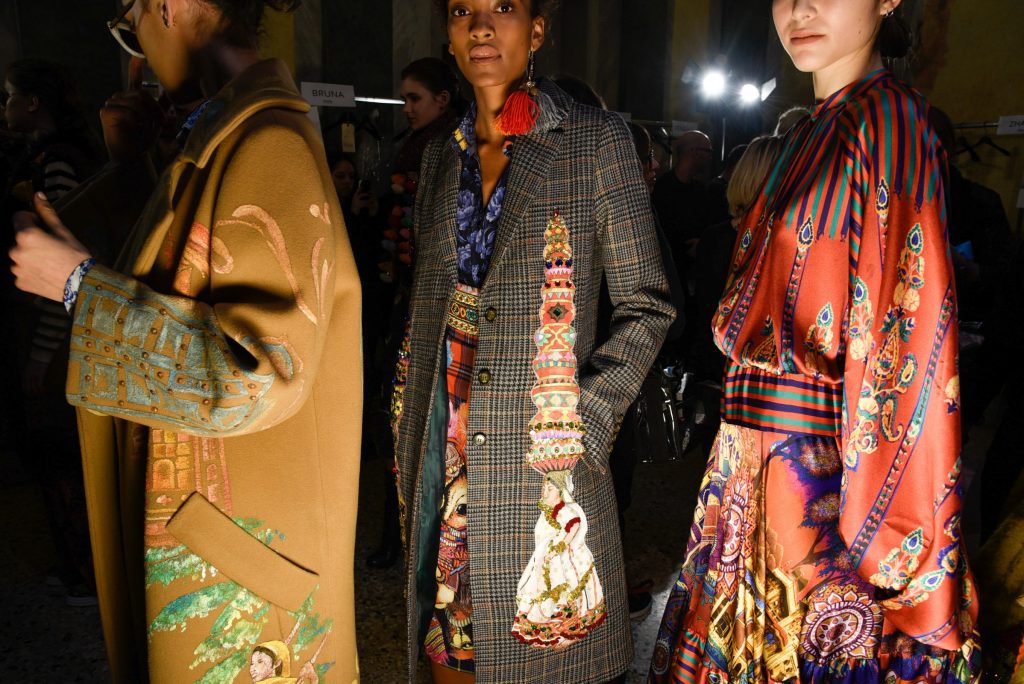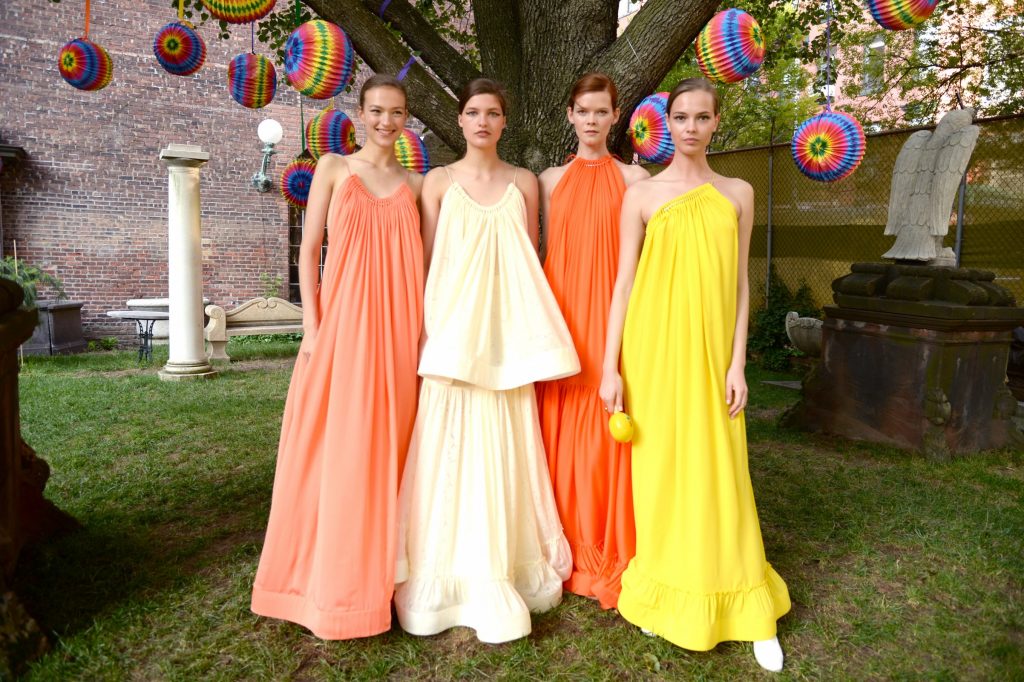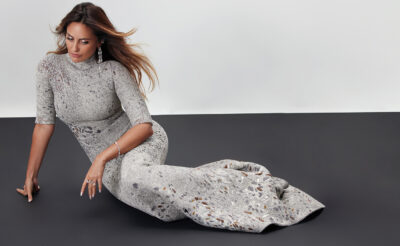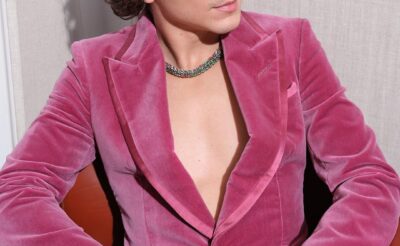Sustainable, ethical, net zero, eco-friendly: Buzzwords increasingly associated with the drive to produce fashion more mindfully. But, what do they really mean, and will sustainability ever be synonymous with luxury? In MOJEH Issue 33 we explored whether it’s ever truly possible to wear our green credentials on our backs.
What do you think about when you think of ethical fashion? Hemp bags, shapeless organic t-shirts and droopy shift dresses? No longer. It’s time to reset our impression of a movement that’s quickly becoming a celebration of uniquely crafted pieces that refuse to sacrifice style. Sustainable fashion these days is just as likely to encompass a Loro Piana vicuña and cashmere coat with a price tag of $15,000 – the vicuña is a South American relative of the llama that the brand has virtually saved from extinction – as it is a streetwise Christopher Raeburn upcycled coat, constructed from dead-stock military wool and parachute silk. The beauty is that, in both cases, while sustainability is a predominant factor in the creation of such beautiful pieces, the end result is inherently deluxe. These days it’s in (not forgetting chic) to be eco.
But, what exactly does it mean to be an ethical fashion brand? “It represents an approach to the design, sourcing and manufacture of clothing, which maximises benefits to people and communities, while minimising impact on the environment,” according to the Ethical Fashion Forum. Ayesha Siddequa, designer, fashion consultant and founder of Future Fashion, an online platform bringing together sustainable brands in the Middle East, goes further. Her minimum standards include fair trade, the absence of forced labour, a consideration of the environmental impact including animal welfare, using raw materials that are non-toxic, natural or recycled or which consume fewer resources, and an emphasis on fair wages and respect for workers (there’s often a stark difference between a living wage and a legal minimum wage).
So far, so reasonable. Siddequa is aiming to kickstart a process of enlightenment in the region about the danger of maintaining the status quo. “For too long, the business model for the fashion industry has been to outsource production to drive down costs. This has resulted in unsafe labour conditions, low wages, and oppressive expectations for millions of workers,” she tells us. “The age of information has exposed us to these conditions, and has touched our conscience.” The human aspect of how our clothes are made has rightly received renewed attention in the wake of the Rana Plaza tragedy, in which a garment factory linked with the production of clothing for many high profile fast fashion brands (including Benetton, El Corte Inglés, H&M, Inditex and Walmart among many others) collapsed in Bangladesh, killing over 1,000 people in 2013. The brands involved were publicly held to account and, two years later, the voluntary trust fund created to compensate workers and their families finally reached its $30m target.
But there is much, much more to the human angle. Stella Jean, known for transposing African prints onto high fashion forms in vibrant colour, is focused on another human aspect that is inextricably tied to the slow fashion campaign: The preservation of ancient traditions. “Everything is based on the principle of increase in value, economic impact and respect for the territory, resources and traditions of the local communities, who must be supported,” says Jean,“while at the same time preserving ancestral knowledge – at risk of extinction – and opposing the debasing effect of imperialist homogenisation.” Jean’s travels have taken her from Haiti to Mali to Burkino Faso, on her quest to develop aspects of her collections from hand-woven cotton textiles to bespoke bogolan (printed cloth produced with organic dye) and jewellery charms.
Likewise, Osklen, designed by UNESCO Goodwill ambassador and former doctor, Oskar Metsavaht, partners with Instituto-E, a non-profit organisation dedicated to promoting sustainable human development (in areas such as education and cultural heritage) in Brazil, along with the Ethical Fashion Initiative’s work in Haiti. Quality is a priority for both labels, who are cult fixtures on the fashion week circuit both on and off the runway, and the juggling act demonstrates that style and sustainability are not mutually exclusive. “Today, the involvement is mainly with Haiti, my mother’s homeland, and it’s deeply linked to the strong attachment I have for this land and its traditions,” Jean explains. “The aim is to help women and artisanal local communities rediscover their skills, to help them become economically independent. Almost all of the accessories in my latest collection were produced by the artisans of Jacmel and Croix- des-Bouquets.”
Ethical fashion represents an approach to the design, sourcing and manufacture of clothing, which maximises benefits to people and communities while minimising impact on the environment.
“I’ve lived in many different countries and I’ve seen fashion created by skilled artisans,” says Ayesha Mustafa, founder of Fashion Compassion, an online retail edit of ethical fashion brands from around the world. She sees the human aspect not just in the cause for fair wages and decent working conditions, but in linking the stories of
the craftspeople and the brand. After all, doesn’t every dress tell its own tale? “I always thought there was such a big gap in the market between the people who sell fashion and the people who actually create it. We have an opportunity to bring forth the stories of the people, mostly women, who are passing skills from one generation to the next.” The stories, crafts and limited edition nature of handmade products feed into a sense of individualism; exclusivity even. “Even big brands like Hermès, they talk about stories,” says Mustafa. A story adds dimension to a brand’s appeal. “If I am spending thousands on a bag, I know a lot of women who can buy [the same thing]. Why should I spend that money on a well known brand when I can get something for a little bit less that’s very unique and when I walk into a room, people are going to look at me and ask ‘where is that from?’” A unique piece that also secures a livelihood in a developing nation? Sounds like a win-win.
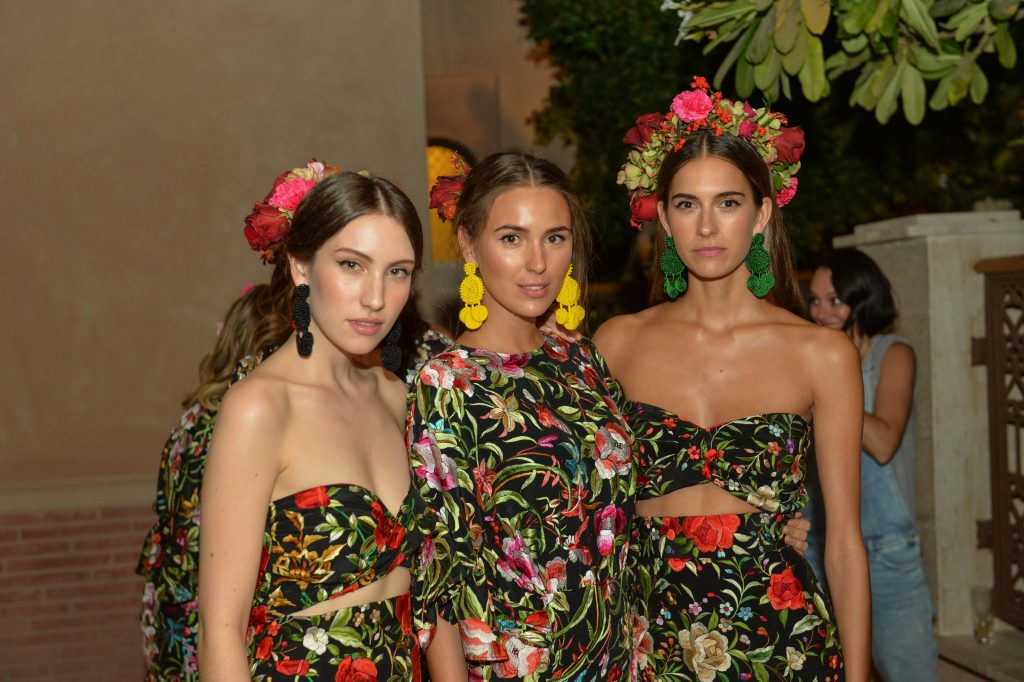
The Spanish collection by Mochi, a homegrown brand that focuses on destination collections and local craftsmanship, designed by Ayah Tabari
That doesn’t mean there aren’t inherent struggles in running a small label, striving for sustainability in an industry that is not so much riding a wave of changing trends and racing seasons as a tsunami. “In all honesty, so many brands I was working with do not even exist any more,” admits Mustafa. “That’s the sad part. It is very hard if you are a small brand to fund a sustainable business. A lot of brands are stuck in a retail cycle of sale and return, which doesn’t work because they pay their artisans before they sell their products.” CFDA-backed artisanal jewellery and accessories brand, A Peace Treaty, defines itself by a small-scale, honestly made global ethos. As designer Dana Arbib told us in MOJEH Issue 31, the brand’s aim is to “create an iconic, handmade, travel-rich lifestyle brand and to make slow fashion fashionable”.
Does Arbib believe this is a model that can be sustained as the brand grows? “Absolutely. We’re concentrating on working with certain countries that have the possibility to grow our production and produce seasonal and ‘core’ A Peace Treaty items. We figure out what everybody does best, and spread the work accordingly.” Working with skilled artisans in community projects might be an ideal way to create bespoke pieces, but there is a natural limit to the volume of product that can ever be produced in such a small scale way. “You need to tackle sustainability in a way where it can be mass produced,” says Mustafa. “Where people can get it at a cheaper price, can get it quickly and you still know how it’s made. It has to compete with fast fashion for it to be mainstream.”
One brand that might have the answer, and which is seeking to make a change without taking itself too seriously, is LA-based label Reformation. Founded in 2009 by Yael Aflalo, whose goal is “to make killer clothes without killing the environment,” everything is designed and produced in a sustainable factory in LA, allowing the brand to control the supply chain from start to finish. Even the tags on the clothes are an irreverent reminder that the brand’s focus is refreshingly different: “Whether it’s a repurposed vintage piece or a sustainable fabric tee, we want that garment’s impact on the planet to be as low as possible. After all, there’s nothing less sexy than leaving a big nasty mess.” All clothing, from carefree party dresses to wool- blend outerwear, focuses on eco-fabrication, using materials that are new and sustainable (like Tencel, which consumes less water in production than cotton), repurposed from vintage clothing, or rescued deadstock from fashion houses that over order. As a consumer, there’s nothing better than chic clothing that comes with a dose of environmental satisfaction. As the brand’s tagline goes, Join the Reformation.
Consumers are sending a clear message: We care about the origins of what we wear.
The cause is strengthened by a new wave of designers, who are not converting to sustainability halfway through the lifespan of a brand but, like Reformation and Raeburn, right from the outset. “I think if you look at design institutions now, especially in the UK and the US, sustainability is a huge part of what they teach their designers,” explains Mustafa. “How do you eliminate waste from your design when you are creating samples? How can you involve more artisan-based communities? When you’re studying as a young designer, those are the sort of messages you are getting and it’s key in changing the dynamic.” With mentors like Stella McCartney – famous for her leather and fur-free collections – Livia Firth (who recently enlisted Erdem to create an eco collection for her Green Carpet Challenge) and Valentino, who have committed to eliminating all hazardous chemicals used throughout the production cycle by January 2020, the next generation of talent simply cannot afford to ignore the ethics of design. At the very least, being seen to be actively pursuing sustainable goals is no longer optional. There’s simply too much at stake.
The same goes for our jewels, where the origins and mining practices of gemstones have been under scrutiny for decades. Gemstone suppliers like Gemfields understand that integrity from mine to market is essential on both an environmental and social level. Not just for the customer’s peace of mind, but from a commercial standpoint. A study by The World Jewellery Confederation in 2013 revealed that luxury brands may lose business if they fail to adequately address their social responsibilities. “Corporate responsibility will be directly linked to a luxury company’s profitability in the future,” said Jonathan Kendall of the confederation. Consumers are sending a clear message: We care about the origins of what we wear. As a result, luxury fashion giants such as LVMH are more active in this area than ever before. As well as publishing an annual environmental report, LVMH is currently a member of the United Nations Global Compact, which requires signatories to apply and promote 10 principles in the fields of human rights, labour and the environment. “Even if a designer doesn’t want to be ‘sustainable’, they are asking more questions about their supply chains in general,” says Mustafa. “I think slowly education, awareness, governmental policy and what consumers want will change the way the industry looks at things.”
It’s impossible to do it all. There’s no single brand that can satisfy every environmental and social concern from fibre to factory to packaging. You only need factor in international shipping (carbon footprint) or an unreliable supply chain component to find chinks in the sustainable armour. Yet, we’re one step closer. The leap is in the quality of pieces that are not just conscious in their chosen aspects of the sustainable game, but stylish, luxurious and one-of-a-kind desirable. Because, let’s face it, nobody wants to go back to the hemp days. To change the ingrained behaviour of both consumers and designers alike, change needs to be inspiring, enlightening and, most importantly, fashionable. It is possible to make ethical fashion a reality across the board – “Luxury brands should simply take less away from reality,” says Jean. “It’s about a simple awareness of the reality and the historical context in which we live, without alienating ourselves.” As we wake up to our combined potential to change, we can make greener choices that allow us to look good, feel good and do good without compromising on style or quality. Sounds sustainable to me.
